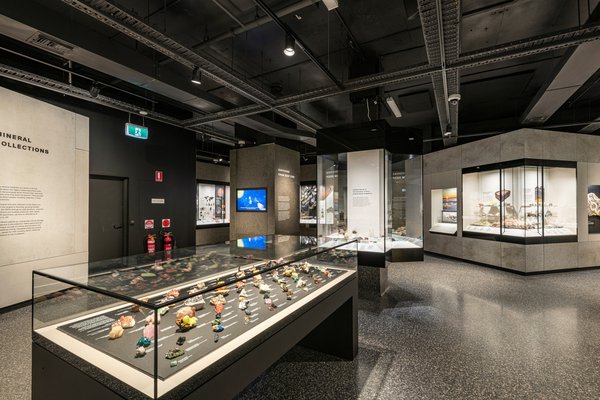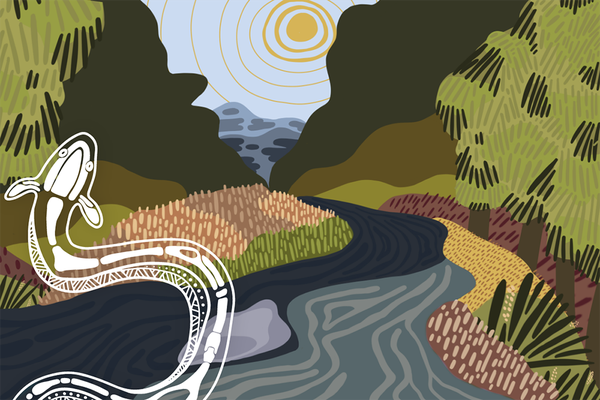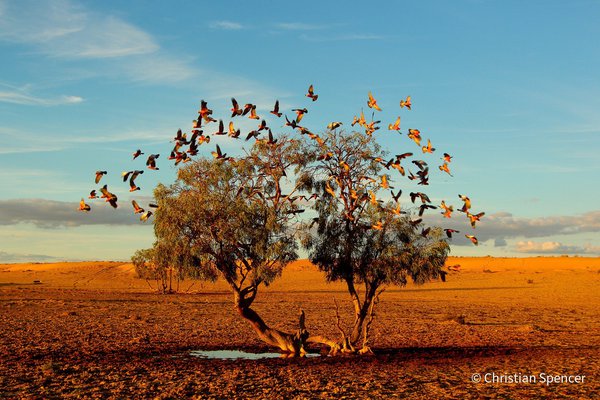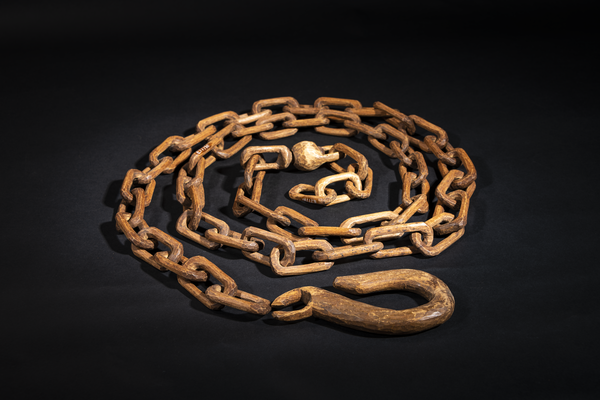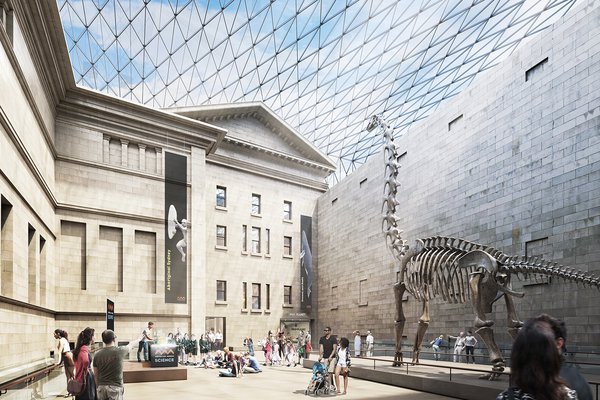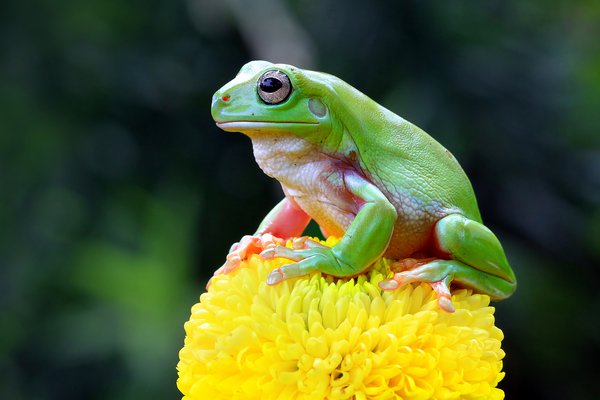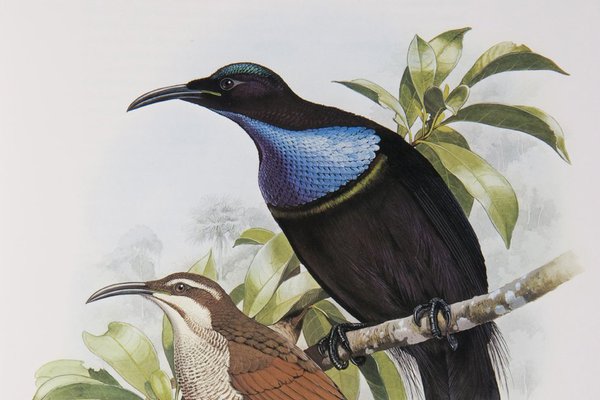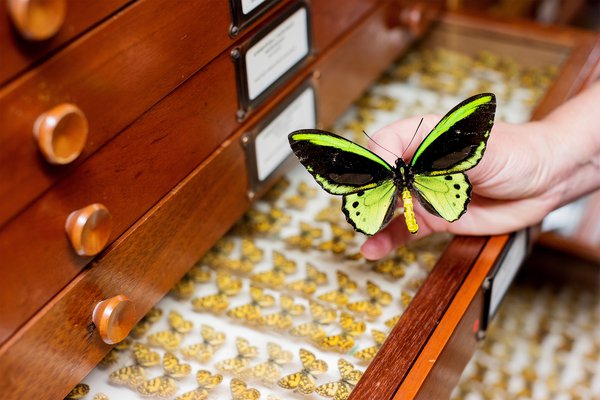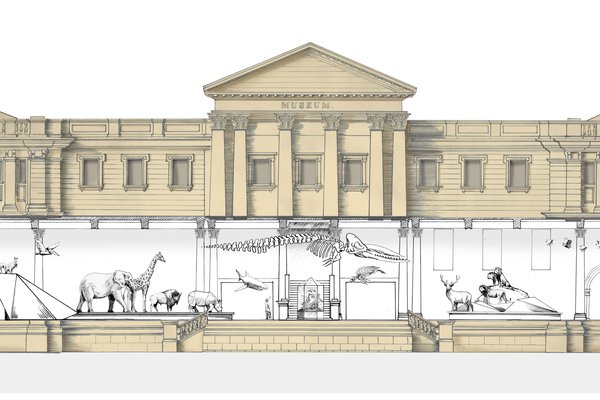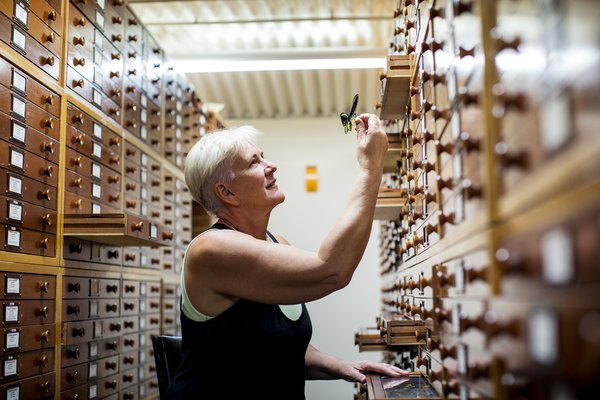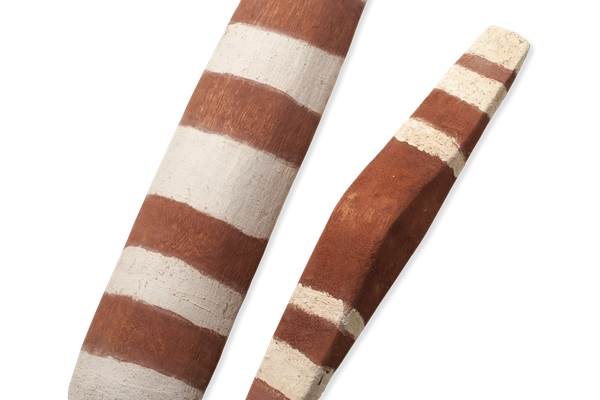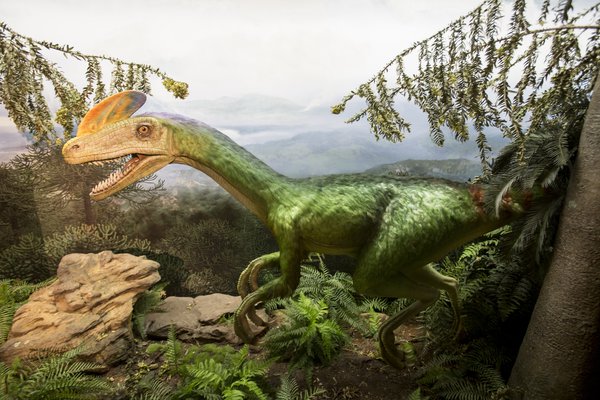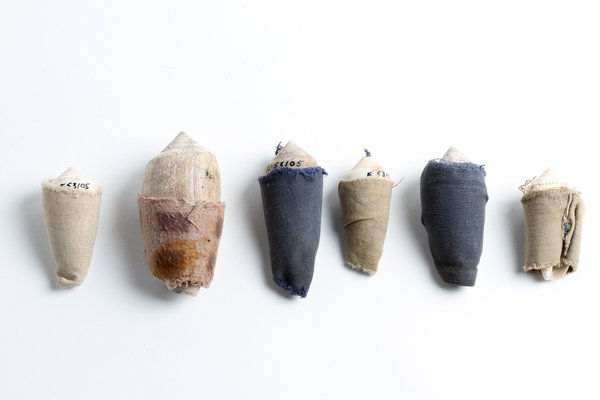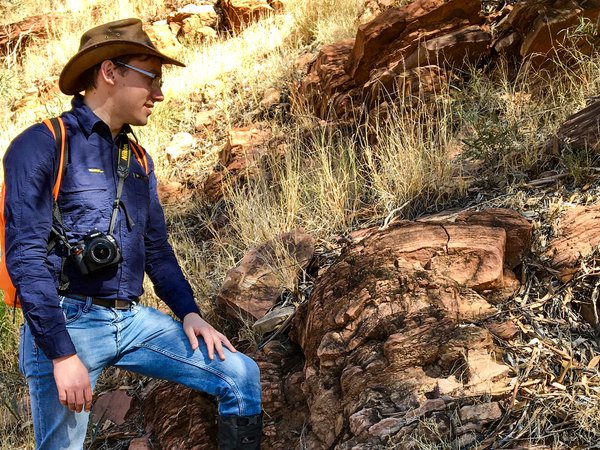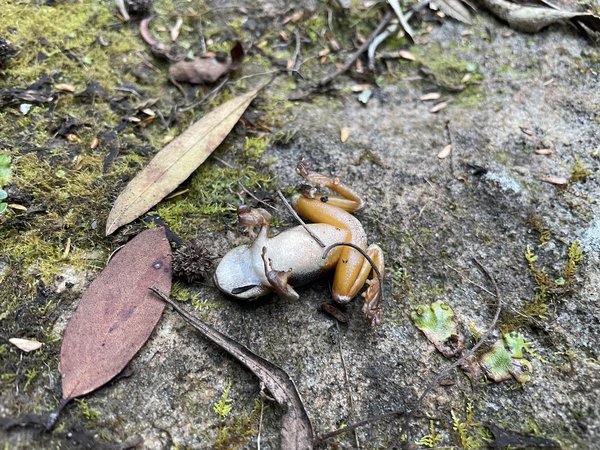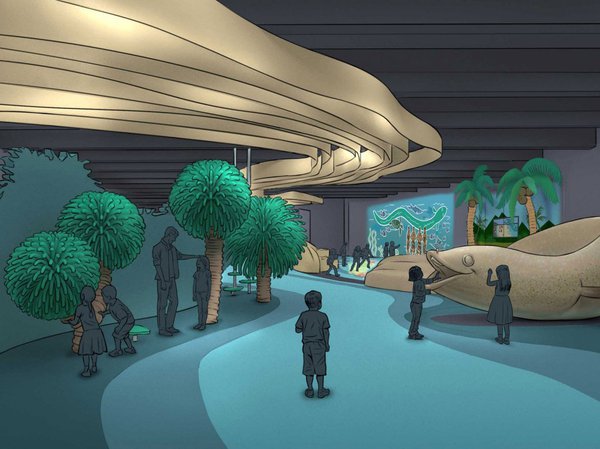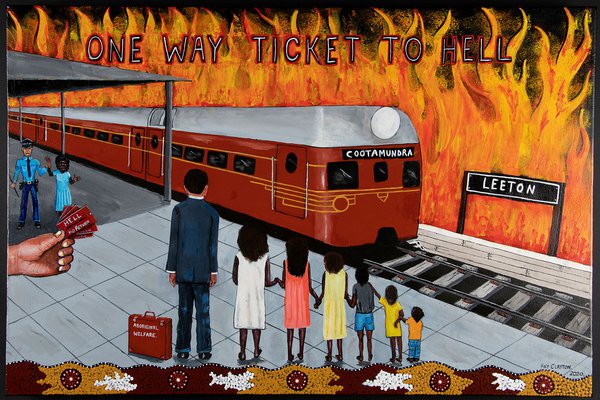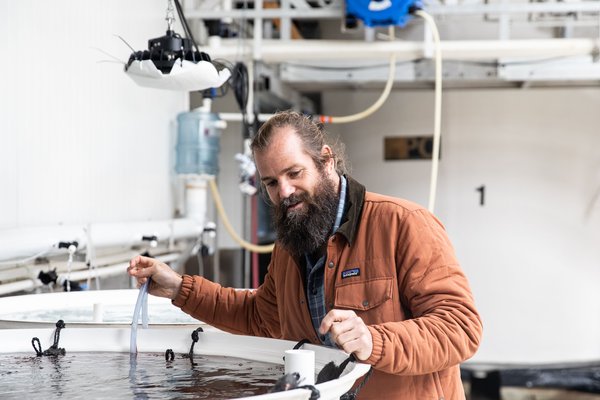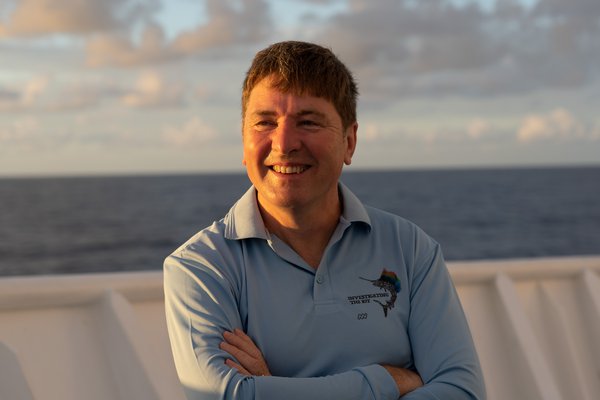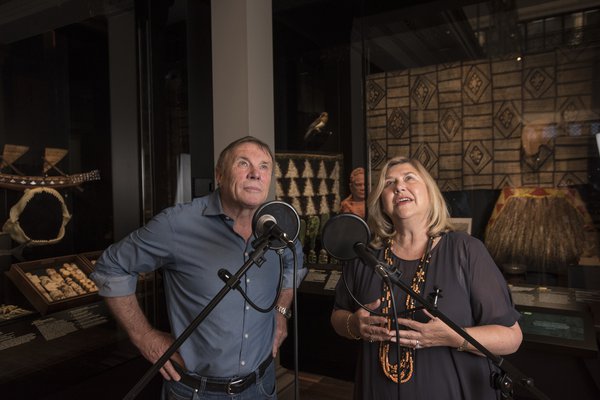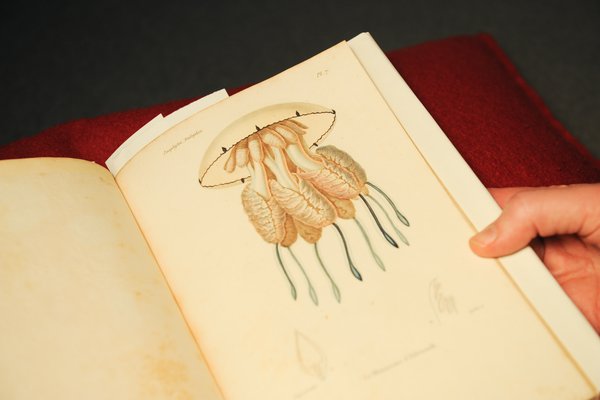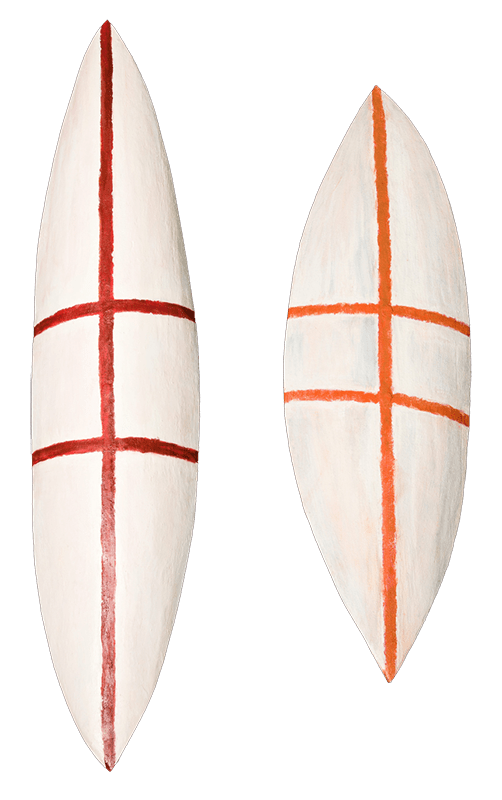Explore magazine
Magazine and podcast

Explore magazine
The Australian Museum's biannual Members' magazine continues a 100-year tradition of publishing behind-the-scenes news and features at Australia’s first museum.
Explore magazine - Summer 2024
Read our latest digital edition of Explore featuring the 2023 Year in Review foreword by Kim McKay AO, Director and CEO of the Australian Museum.
Read nowPrevious issues
Read previous issues of the Explore magazine and also discover the past Australian Museum Magazine publications digitised from our Archives.
Explore podcast
A new podcast from the Australian Museum that takes you behind the scenes of expeditions, exhibitions and the lab to show you the world of Australia’s first museum. Discover how our scientists are using the collection’s 22 million objects and specimens to safeguard the extraordinarily rich biodiversity of our planet.
Explore podcast episode 1: Animal mysteries
Hosted by: Alice Gage
Guests: Dr Patrick Smith, Dr Jodi Rowley and Sara Judge
Modern science’s rapidly evolving techniques are pretty impressive, but the big secrets of the animal world continue to keep our scientists guessing.
Alice Gage: I’m Alice Gage, editor of the Australian Museum magazine. I’d like to acknowledge the Gadigal people as the Custodians of the land on which the Australian Museum stands. We pay our respect to Aboriginal Elders and recognise their continuous connection to Country.
This is Explore, a podcast that takes you inside Australia’s first museum. There are 21.9 million objects and specimens in the Museum’s collection, and each contains a clue from the past and an answer for the future.
Join us on expeditions, in exhibitions and in the lab as we delve into the world of the Australian Museum.
Patrick Smith: 600 million years ago, this would have been the eastern coastline of Australia.
Jodi Rowley: We're in the midst of, I guess, a murder mystery.
Alice Gage: Today, in our first episode, we’re talking mysteries of the animal world.
So, where should we begin? How about … 600 million years ago?
When you think of the Outback, you’re probably not imagining tropical reefs, a frozen wasteland, or giant wombats and crocodiles roaming the savannahs near Uluru. And yet that’s exactly what Dr Patrick Smith walked into on a recent expedition to the Red Centre.
<Patrick Smith in the field recording>
Patrick is a Palaeontologist from the Australian Museum Research Institute.
Patrick Smith: I went with a group of people. We were expecting to find fossils of one particular age, but we didn't actually expect to sign so many from so many different ages. So from the Ediacaran period, which is about 600 million years ago, and then we found some slightly younger all the way from the Devonian. So about 300 million all the way or a little bit older than that. And then all the way up to in the more recent the Miocene, we found these giant wombats that you're hearing about, for example, these large crocodiles.
Alice Gage: Could you tell us what it would have been like there in that spot at that at the earliest point that you went back to or could see back to rather?
Patrick Smith: Sure. So the spot was near Alice Springs, it was actually closer to Alice Springs than it is to Uluru. It was about sixty four k east of Alice. And the spot itself now it looks like a dry desert, dry, dusty, mainly sort of full of prickly acacia, spinifex a lot of cattle as well. And then small, rocky sort of hills that sort of stretch of what look like into infinity. But back 600 million years ago, this would have been the eastern coastline of Australia. What we would think of as the Australian continent would have looked very different.
Alice Gage: Starting at the entrance of the ranges, Patrick found fossils of jellyfish-like animals and primitive worms.
As he walked deeper in the ranges, Patrick saw evidence of life from around 540 million years ago, when a volcanic arc formed on that ancient coastline.
Patrick Smith: Bit like modern day sort of Fiji in those the Indonesian archipelago with some of the volcanic islands there, basically something like that would have started to form in along the East Coast at about four hundred and eighty million years ago. At that time again, still, the eastern coastline would have been pretty much drawn, though, in the centre of Australia.
And as that east coast to sort of get more and more volcanoes and things like this, the Centre of Australia started to have a sea that that basically became shallower and shallower and shallower. And as it was shallowing like that, developed huge swaths of of both marine life, but also things like, for example, coral reefs at some stage or their equivalents, sponge like reefs things called aqueous acids. And then even after those trilobites formed large mats, these sort of small bug like creatures a bit like underwater cockroaches would have been crawling across the ocean floor. [00:07:53] But as we moved further and further and time forward, that sort of Centre of Australia coastline started to creep further further towards the east until those volcanic islands basically smashed into the side of Australia and started to build up the eastern coast.
And so we now have what we think of as the eastern coast of Australia. In doing so, though, the centre of Australia became shallower and shallower until it became freshwater lakes and rivers. So in the Devonian, for example, you're looking at sort of freshwater lakes with fish. That's the only thing you find as fossils in central Australia. And then by the close of the Devonian, because the eastern coastline had crept so far to almost what we consider today, the whole of Central Australia had basically dried out.
Alice Gage: And that’s about when Australia froze over. During the Mesozoic era, around 200 to 50 million years ago, while dinosaurs were roaming the planet, Australia was slowly moving south toward Antarctica…and became a frozen wasteland.
Patrick Smith: And then slowly, as Australia then drifted back towards the north, these areas of Australia started to become lowlands and they started to form the sort of low vegetative swamps. And so you end up with fossils like, as I was saying, these giant protons.
Alice Gage: Oh yeah by that he means
Patrick Smith: Quote unquote giant wombats.
Alice Gage: No big deal
Patrick Smith: Forming in these sort of swamp like conditions in central Australia, which would have been sort of around at the time. So Central Australia would have looked like a bit like almost like a lush swampland or almost like a rainforest, And then as Australia moved further and further towards the north, it dried even more. And that's what we ended up with the desert we have today.
Alice Gage: And going back to the animals that you were talking about earlier. Are any of those the ancestors of animals that we would know today?
Patrick Smith: Yes, so some of the animals that we were talking about definitely are ancestors of some of the animals around today. So things like, for example, even though some of those early ones, like the trilobites I was mentioning, the yakasai acids, they have modern relatives that as part of the same what we call phylum [00:15:10] Other examples of of say, for example, close cousins of the trilobites are things like, for example, spiders, horseshoe crabs, insects, lobsters, et cetera, or things like, for example, with the IQ. So acids of things like sponges, Venus sponges or sponges that you used to bath yourself with But other animals like, for example, the more recent ones, particularly the huge, diprotodontids. They got quite close relatives with things like modern wombats and modern koalas.
Alice Gage: In your article you write that when Europeans arrived in Australia, they believed it was a young country. What do you think they were missing?
Patrick Smith: I think they were they didn't understand that the continent itself was very old. It's it's a it's a sad state of affairs that Australia has often been overlooked as a bit of a a second child sort of to to the rest of the nations of the world, whereas in reality, it is in fact one of the more interesting, I would argue, continents in the world because it's one of the most ancient and yet well preserved continents on the world.
Alice Gage: What can Natural History Museum Science teach us about animals in our world?
Patrick Smith: I suppose museums, at least from a paleontological perspective, can teach us a lot about the evolution of life through time. Fossils really tell the history and story of animal life through time, and we don't often appreciate when talking about evolution that these things occur over many millions and millions and millions of years. Particularly big changes and evolution tend to happen relatively slowly over time. So palaeontology teaches us that rapid change, for example, say things like human induced climate change. Cause big problems for animals because they just can't adapt fast enough. Evolution doesn't allow them to adapt fast enough. Evolution doesn’t allow them to evolve fast enough. And so you end up with the trouble that people cannot make an argument well. Animals were just evolve to climate change, won't they? They have evolved in the past. The differences in the Earth's conditions, like an evolved to climate change and what we can do is show with the fossil record well no, that's not the case. See, it's taken millions of years for a lot of these things to change, not thousands of years or even hundreds of years. And if you move at that pace, everything's going to go extinct.
Alice Gage: Patrick, thank you so much for chatting with us today and for taking us to the Red Centre.
Patrick Smith: Thank you.
Alice Gage: One way to solve a murder mystery is to have agents in the field, tracking clues and collecting information. In the case of FrogID, that’s over 30,000 agents, all over Australia. These homespun sleuths are called citizen scientists, and their work has become integral to understanding the causes behind a mass frog die-off that is decimating populations down the east coast of the country.
Jodi Rowley: Each frog species has a unique call. So all 240, six or so species of frog in Australia has a different croak. Whether it's sort of rarer like a green tree frog, whether it's Bok Bok like a stripe marsh frog, but you can tell each species they're yelling out what species they are.
Alice Gage: Dr Jodi Rowley is the lead scientist on FrogID.
Jodi Rowley: I'm curator of amphibian and reptile conservation biology at the Australian Museum and at the University of New South Wales.
Alice Gage: So, Jodie, you believe since June last year that thousands of frogs have died, although it's hard to say exactly how many, and so far you've identified 35 different species that have been affected. Can you tell us about how it all started and how you first became aware of the issue?
Jodi Rowley: As it started getting cool last year in May, we saw a few things on social media, in particular of dead green tree frogs on the Central Coast. But of course, everything dies in nature. And if a frog is going to die, it tends to die when it gets cooler, because that's when their immune system kind of ramps down frogs are so sensitive to temperature [...] When there's a cold snap, that's when you'll sometimes see dead frogs.
Then around June, I went, nope, this doesn't seem normal. I ended up doing a radio interview because a concerned citizen who had found a number of dead frogs in her property got in touch with ABC radio on the North Coast. And we did a little story about it, which was an ABC article, and I just started getting emails saying, You know what? It's not just around here, I'm getting dead frogs too, and I'm getting dead frogs too.
So myself and Dr. Carey Rose from Taronga Zoo, from the Australian Registry of Wildlife Health, we wrote an article for the conversation and I knew immediately when it was actually published because we asked people to email us if they had seen dead and or sick frogs and send photos and location details. And at about sort of 6:01 in the morning, I got my first email and then they just didn't stop. And in that first day, I think we've got about 200 emails from people from across Australia, particularly from the East Coast, reporting sick and dying frogs. But we're now up to 40 species of Australian frog reported sick and dying, and certainly thousands and thousands of individual frogs, which is heartbreaking.
Alice Gage: Do you imagine that the die-off will continue until the cause is found?
Jodi Rowley: We're still […] in the midst of our investigation, things are taking a while because we've relied on people actually storing these frogs for us. So when they find a dead frog to put it in in a Ziploc and freeze them and we're still gradually going through and collecting them, we've got about 200 or so at the moment at the Australian Museum that are forming part of the investigation.
Alice Gage: And do you have any idea what's causing it?
Jodi Rowley: We know that it's not a simple answer. I guess the number one culprit, the amphibian chytrid fungus is involved. It is infecting a lot of the frogs that we're finding. It's also not seemingly impacting a lot of the frog that we found sick and dead.
The only reason that we've been able to get as far as we've got and we'll hopefully soon have an answer as to exactly what has caused this mass mortality event is thanks to all these amazing people that probably never thought that they would be putting frogs in their freezers for us and and helping our investigation.
Alice Gage: This is citizen science in action, isn't it? It's kind of like an amazing example of what people can do when they come together to collect data for scientists. How do you account for people's increasing interest in being involved in citizen science?
Jodi Rowley: I wasn't as attuned to this kind of, you know, community science until the Frog I.D. project was launched… and I realised how much people were willing to, you know, get out there and stand in the rain, get bitten by mozzies to record the call of a tiny little winter breeding frog around Albury, or climb up a mountain and try and get a record of a rare frog.
Alice Gage: FrogID is like Shazam for frogs. People download the FrogID app, record a croaking frog, and send it in to the Australian Museum’s Herpetology department to have it identified. All of the info that comes with that recording – date, location, even weather – becomes a data point.
FrogID is giving Jodi and her colleagues a picture of which frogs live where, how many of them there are and how their populations are changing.
Jodi Rowley: So even before this mortality event, even before frogs are dropping dead around Australia this last winter, we've got a pretty bad track record for frogs. We've got dozens of frogs that are threatened with extinction. We've lost at least four frogs already, and one of the biggest challenges we face is that we actually don't know that much about frogs.
And so this was a plea for people power to help us better understand and conserve frogs. And of course, frogs are also really fantastic indicators of environmental health. So how we could get a better understanding of the health of our environment more broadly.
We've got over half a million records of frogs in just over four years, thanks to people out there with the Frog ID app recording frogs, and it really has revolutionised understanding of frogs, how they're doing, what places are most important, how frogs responding to climate change, urbanisation, all sorts of things.
I was powerless this winter as frogs were dropping dead around the place, and it was only thanks to all these amazing people across Australia, many of whom were aware of the Frog ID project that it recorded frogs. And we're now witnessing this frog crisis firsthand.
Alice Gage: It's such a great project. How do you think your findings can impact conservation efforts?
Jodi Rowley: We actually ended up using the frog data to give a surprisingly good news story about our frogs. So we were able to sort of let everyone know that there was widespread persistence of our frogs [...] It was the first paper using data about the impact of the 2019-20 bushfires because we were in lockdown again, as well as scientists. [...] We've been able to rank Australia's frogs according to how sensitive they are to environmental change, which gives us a great idea of which species we need to focus on in terms of conservation efforts. And the data is being directly used to try and better understand what conservation categories things should should fall into. So which frog species are likely to be most threatened? And it's the most up to date information on frog distributions, breeding seasons, habitat, all sorts of things.
Now Australia has the best information on frogs than any other country in the world. We've got a long way to go because a lot of Australia is very remote. A lot of frogs are really tricky only coming up after pouring rain. But together, Australians have have actually made an amazing contribution to our understanding of frogs and figuring out what we need to do to make sure we don't lose any more of them.
What I've come to realise that the impact of Frog ID I've come to realise that as a conservation biologist that, you know, I'm not alone, that there are these people across Australia, so many amazing, wonderful people that are joining the fight to make a better planet.
I'm I'm really grateful. That's the thing that gives me hope in this time is that together we have an enormous amount of power and capacity to make a difference and and to make a better future. And so only together are we able to get to the bottom of these frog murder mystery, and I can't thank everybody enough.
Alice Gage: How do you think the science of natural history? Museums can help us with the unraveling of mysteries like the one that you're looking at at the moment?
Jodi Rowley: The collections are vital collections of amphibians and reptiles, we have around 190, 000 individuals and we have a lot of genetic material as well associated with them, and they are like a library of biodiversity. They let us know what was here before and fortunately, we have the precious and sad honour of holding extinct specimens or species that have gone extinct in the wild. Frogs that no longer exist in the wild but fortunately, we can still learn about them because of the specimens. Our collections are helping us understand when diseases arrived.
So obviously, when we end up with, you know, frogs dying, they've been dealing with the amphibian chytrid fungus for several decades. By investigating our collections, we can understand when it arrived. We can understand how frogs have changed over time, how they're responding to things like climate change. We can understand about their diets and their breeding habitats, and particularly with new technologies like 3D imaging. We're getting a better understanding every day about how our biodiversity has changed over time and potentially how it's going to change over the future. And what we can do to make sure that we save it. So it's an incredible honour to to be responsible for the care and maintenance of our collections at the Australian Museum because they're being used by researchers both at the museum, across Australia and around the world to better understand and conserve our biodiversity. They're incredibly important pieces in so many puzzles to help make sure that we've got such amazing creatures still in the future.
Alice Gage: Jodi, thank you so much for joining us. Congratulations on on those incredible results through FrogID, and good luck on unraveling this mystery.
Jodi Rowley: Thank you so much. And really, it's thanks to everybody out there that has recorded a frog or or frozen a dead frog as part of this investigation into us. We're doing this together, and we thank you so much.
Alice Gage: And if anyone comes across any sick or dead frogs, you can email the location and photos to calls at frogid.net.au
Alice Gage: The eel is one of the most mysterious creatures of them all.
Hatched in an unknown breeding ground somewhere in the Coral Sea, eel larva ride the East Australian Current thousands of kilometres to mainland Australia. Once the larva have found their way into an estuary or river, they gain a sex, grow to up to 1.7m in length, scale waterfalls cross dry land, and live for over 50 years. When the eels are good and ready, they take the marathon swim back to the same mysterious breeding ground in the Coral Sea, they grows sex organs, spawn and die.
In Burra – a new education space opening at the Australian Museum in July – the incredible eel, known as burra, is an appropriately adaptable guide through a ‘many-ways’ learning experience that combines Western science with First Nations and Pasifika knowledge systems.
Sara Judge tells us more.
Sara Judge: My name is Sara Young, a judge. I am a little bundle, a young woman from the South Coast. My ancestors were traditionally from around the Narooma or Narooma area, and I am an environmental scientist and geographer by training and currently working here at the Australian Museum as First Nations content producer on the bar learning space.
Burra is a word, meaning eel and the language is actually it's a it's a word that is found in a lot of the east languages for football. So it's it's in the Gadigal language, it's in Dharawal, it's in a lot of the Yuin languages. And when we were looking for a word to use to describe eels, we we came across a lot of different ones. But burra was one that was just it seemed to be present in a lot of the languages of a lot of the First Nations communities and peoples that we wanted to represent.
The reason we chose the eel as the signature animal for our learning place was because of, well, firstly because of their significance to Southeast First Nations people. But going even deeper than that was the way that they just so beautifully connect everything through their life cycle.
The Eels born in the Pacific. They breed in the Pacific, but they come over to Australia to mature. They spend anywhere from 30 to 50. Some some scientists even estimate possibly longer than 50 years here, you know, in our estuaries and in our river systems, and they get really, really big. And basically every year, there's two really significant things that you can notice in Southeast Australia with Eels. First, you'll notice the incoming little baby eels who are arriving here and they're called Elvis. So they're just like, if you imagine a teeny tiny, almost worm sized eel wriggling, hanging out with all the little baby fishes in the estuaries and bays. That's that's the first indicator of what time of year it might be. And then the next thing that happens in the year is that suddenly you'll start seeing a large number of really big, mature eels moving from the inland rivers out towards the coast. And you know that one, that's a particularly important time because obviously that's the time where you will find the best eels for eating.
There's a lot more to what burra symbolises than just food. If you wander around Sydney and down the south coast and even inland towards the Hawkesbury Napean and out to the bar of Grand Valley, you'll find so many First Nations that have eel carvings and eel stories. It's there's such a prevalent animal for us because they are very closely linked to a lot of our creation ancestors. So, you know, the one that immediately comes to mind is that most people are very familiar with the concept of the Rainbow Serpent, and the idea has come from a very inland place[...] but for us, here are saltwater people on the southeast coast. Our rainbow serpent is more of a rainbow eel and Burra Learning Place will actually have part of that beautiful story from [XYZ] country about [XYZ] [...] What eels represent to us is creation. Our origin stories, our understanding of how all of the ocean currents and the rivers came to be migration and movement seasons. There's so much knowledge tied up in eels for us. So, yeah, they're really important animals for First Nations people, especially on the south east coast.
And what's so amazing about that is that, you know, it's a it's an animal that is shared between First Nations Aboriginal and Torres Strait Islander people and First Nations Pacific people. But then it also has this beautiful way of bringing in Western science because I just feel like I feel like Eels really call for a little bit of like scientific humility in some ways, because what's amazing about them? We know that they breed somewhere in the Pacific, but we don't actually know where, and this has been such a mystery for science for so long. It's so great to actually have something that you don't know the answer to, and that's still a little bit of a mystery,
In Burra Learning Place one interactive that kids will get to engage with is that you go into the theatre, you hear this story of in America in the couple who have had this fight all through the landscape and basically this fight that they're having creates all of these different landscape features that told the gunman on our people where they could find water, where they could find food. It acted as a map to tell them where, where on country you were.
Then when you come out of the theatre after hearing the story, you also get to play in this light projected topographic map, where kids can draw their fingers through the through the sand and the topographic map responds to them with where the water would go.
What we want them to say is that this this this is not just a children's book story, it's not mythology. This is actually complex knowledge and understanding of how water over evolutionary time has created that landscape and carved its way through valleys and mountains and connects perfectly with the science. It's just a different way of understanding that science and this really is at the heart of what we've tried to do with Burra as a many ways learning space. It's all about showing that what might not be immediately recognisable to people today as science actually is, it's its own form of cultural science and needs to be taken just as seriously.
I'm really excited to see young people come into this space and actually be faced for the first time with this concept that will actually like all of the observations that First Nations people made over tens of thousands of of continuous occupation of this land. That is not that different to the observations made by scientists in the scientific method. It has its differences, but it's also similar enough that I feel like if we can, just if we can all learn to put down the lack of understanding and the distrust, it would actually strengthen both science and culture for us to work together.
It's like we're always stronger together, aren't we? I know that like when when I'm a bit of a weaver and when I'm waving, I always think of it like, you can just have one strand and it will break really easy. But it's not until you weave it together with other strands that it becomes really, really strong. And I just think that's the case. And you know, the thing is, is that we First Nations knowledge is we always use that in plural because it's it's exactly that value is exactly what made us able to be here for as long as what our people have been here because we're not just a single knowledge system and we're not just a single culture or a single people where multiple peoples cultures, languages, knowledge is and it has been through like having relationships with each other and sharing with each other and learning from each other and teaching each other.
This is a different way that we could be thinking about things like climate change, like, you know, instead of climate change just being this problem to deal with, how do we understand it in a more relational way? How would First Nations peoples understand it? What's actually happening here? What is country trying to say to us and to tell us and to draw attention back to? And I think we're just in a really interesting time where people are really starting to look at First Nations views of the world in a really different way and really realising that these aren't stories and not mythological stories. There's actually important knowledge here that we could use to maybe improve things, make things better, heal things. So I'm hopeful about that.
Alice Gage: You can find images and stories to accompany what you’ve heard today on the Explore webpage, just go to australian.museum/explore
Don’t miss the next episode, which is hosted by Australian Museum Director, First Nations, Laura McBride, and will delve into truth-telling and the hidden history of Australia’s foundation.
Thank you so much for listening to our very first episode. If you liked it, we’d love you to share the series, and subscribe on iTunes or Spotify.
I’m Alice Gage and this has been Explore. This episode was produced by myself and Cassandra Steeth, edited by Bernadette Phuong Nam Nguyen and mixed by Weronika Razna. Our music was written and performed by Freya Berkout. See you next time.
In this episode, ancient creatures of Central Australia are unearthed by Australian Museum Palaeontolgist Patrick Smith, while back in the present, frog expert Dr Jodi Rowley hunts for answers to explain the mass frog die-off that plagues the eastern states. The combined power of the Australian Museum collections and citizen science may offer some answers.
First Nations knowledges about the significance of the Eel offer a new understanding of this elusive creature and clues as to how we might reboot our connection to the natural world. Learn more.
Discover the Explore podcast series
Discover even more by becoming a Member
Become a Member and receive the print edition of Explore magazine in your letterbox.
Join now
